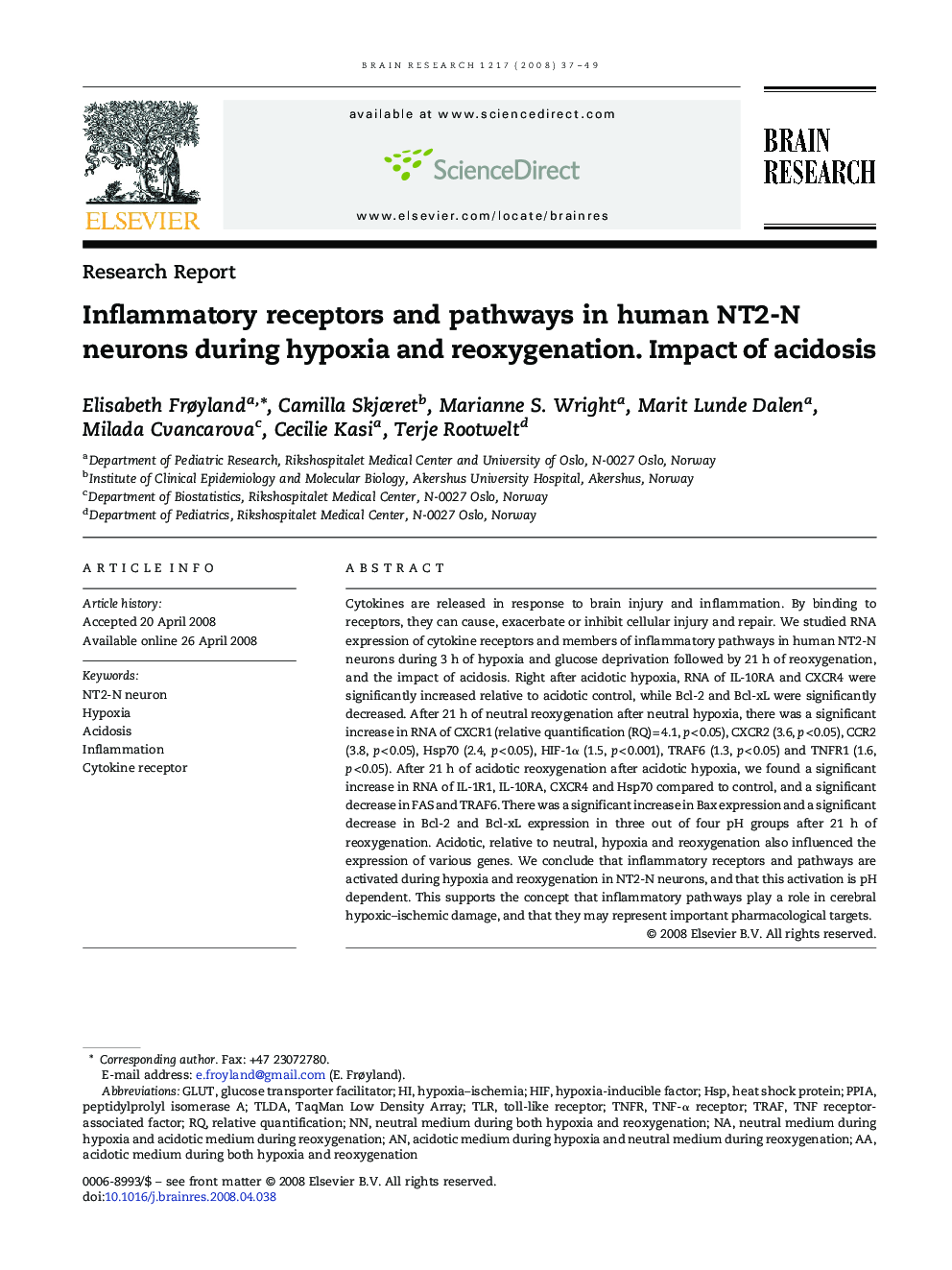| کد مقاله | کد نشریه | سال انتشار | مقاله انگلیسی | نسخه تمام متن |
|---|---|---|---|---|
| 4329696 | 1614222 | 2008 | 13 صفحه PDF | دانلود رایگان |

Cytokines are released in response to brain injury and inflammation. By binding to receptors, they can cause, exacerbate or inhibit cellular injury and repair. We studied RNA expression of cytokine receptors and members of inflammatory pathways in human NT2-N neurons during 3 h of hypoxia and glucose deprivation followed by 21 h of reoxygenation, and the impact of acidosis. Right after acidotic hypoxia, RNA of IL-10RA and CXCR4 were significantly increased relative to acidotic control, while Bcl-2 and Bcl-xL were significantly decreased. After 21 h of neutral reoxygenation after neutral hypoxia, there was a significant increase in RNA of CXCR1 (relative quantification (RQ) = 4.1, p < 0.05), CXCR2 (3.6, p < 0.05), CCR2 (3.8, p < 0.05), Hsp70 (2.4, p < 0.05), HIF-1α (1.5, p < 0.001), TRAF6 (1.3, p < 0.05) and TNFR1 (1.6, p < 0.05). After 21 h of acidotic reoxygenation after acidotic hypoxia, we found a significant increase in RNA of IL-1R1, IL-10RA, CXCR4 and Hsp70 compared to control, and a significant decrease in FAS and TRAF6. There was a significant increase in Bax expression and a significant decrease in Bcl-2 and Bcl-xL expression in three out of four pH groups after 21 h of reoxygenation. Acidotic, relative to neutral, hypoxia and reoxygenation also influenced the expression of various genes. We conclude that inflammatory receptors and pathways are activated during hypoxia and reoxygenation in NT2-N neurons, and that this activation is pH dependent. This supports the concept that inflammatory pathways play a role in cerebral hypoxic–ischemic damage, and that they may represent important pharmacological targets.
Journal: Brain Research - Volume 1217, 27 June 2008, Pages 37–49